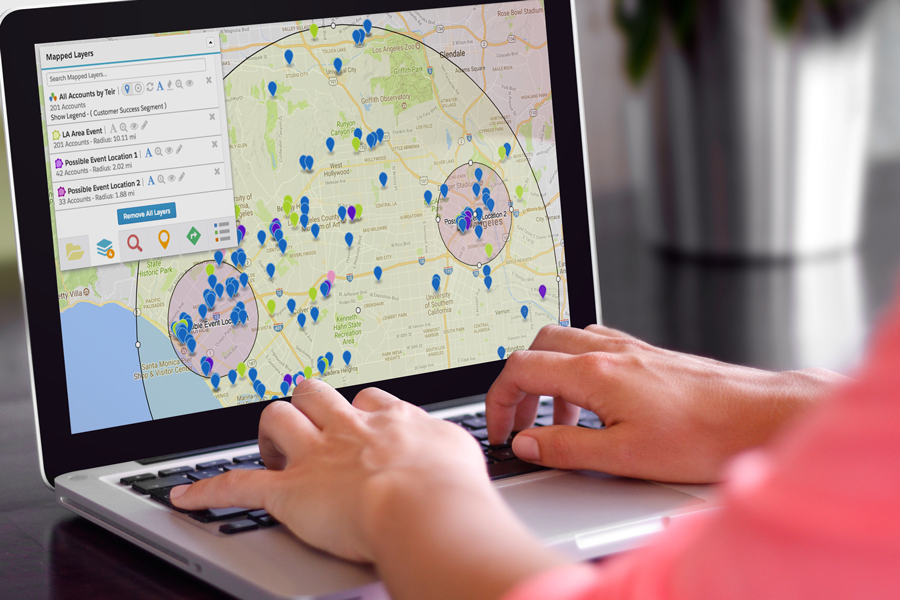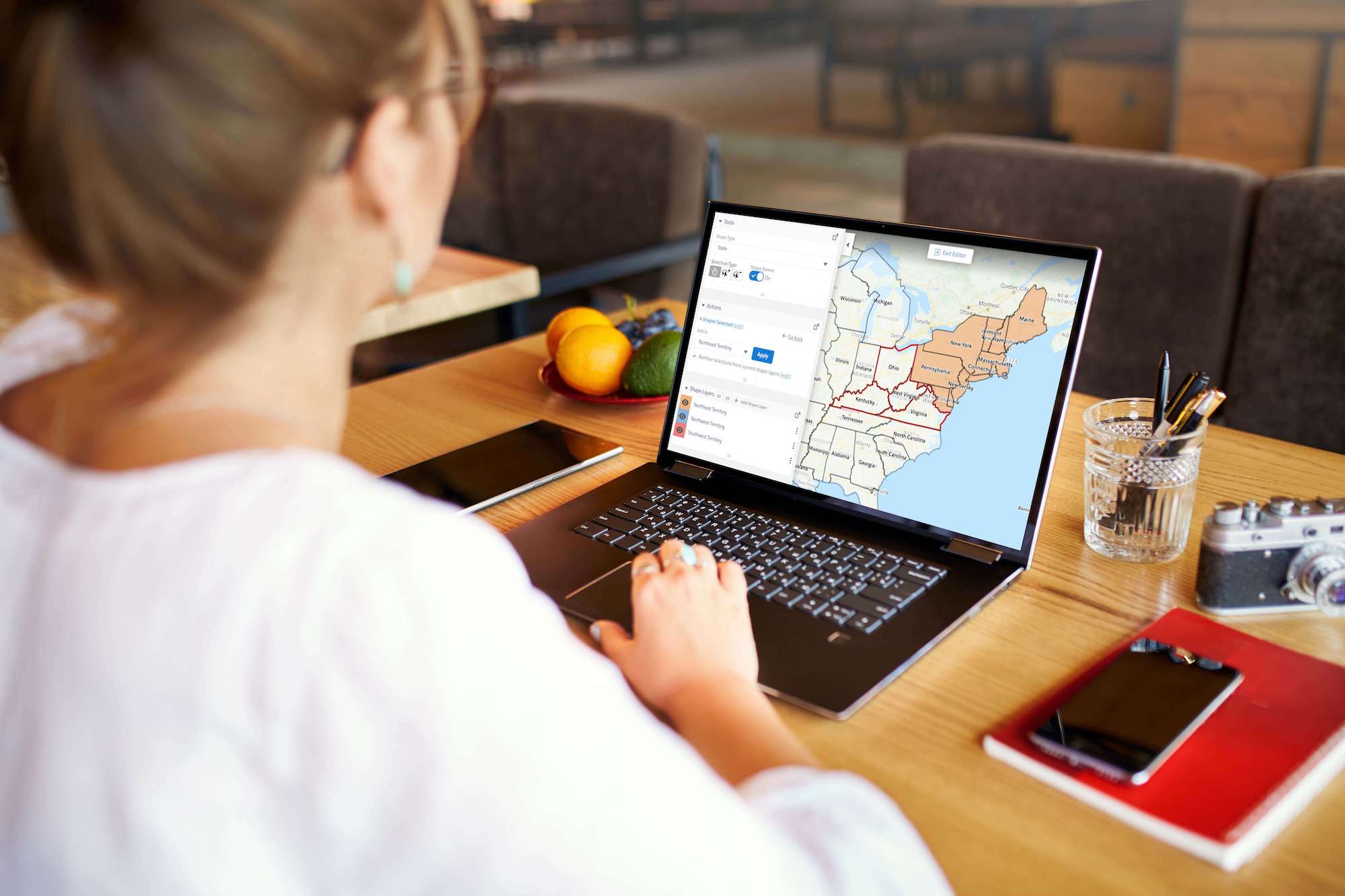
Looking back at our predictions for the geolocation space
Despite how disruptive 2020 was, there were significant emerging trends that we expected would continue into 2021 and beyond. We recorded those predictions in this blog post at the end of the year, giving our best guesses as to how 2021 would look for the geolocation & geoanalytics space.
We believed that the organizations who successfully adopted these changes would do well in 2021 and beyond. So now that we’re halfway through the year, let’s take a look back at our predictions from last year to see how accurate – or inaccurate – they were.
Prediction 1: Increased urgency to be productive and “follow the data”
We said: Businesses feel a sense of urgency to make up for lost time and productivity. Everyone, especially if you’re a sales rep, is under pressure to do more in less time. Efficiency and strategic approaches to account targeting is critical.
Now we think: This one seems right on the mark. Everywhere you go now, you hear the phrase “data-driven decision.” It seems to be the new “pivot.” We’ve observed this trend firsthand from our own customers. A blog post from Q1 describes this shift perfectly:
“We’ve heard from our customers that they’ve become much more data-driven and analytics-based with their planning and strategy. They recognized the need for solid strategies and intentional, focused targeting as the way they work changed after 2020.”
For example, one of our customers in the manufacturing industry uses Geopointe to map the areas where their reps typically win deals. If a deal is lost in this “Zone of Natural Advantage,” the Sales Operations team analyzes the data to see if their process needs to change in order to predict a better outcome. Like so many others, they’re using valuable data to inform the decisions they make about how their sales team operates.
Prediction 2: How users consume analytics & CRM data will change
We said: Visualization is the best way to interpret or ‘consume’ CRM data. Users want an instant understanding of large amounts of data, and to uncover insights easily. Gone are the days of millions of data points spit out onto a spreadsheet. To succeed, the most relevant data has to be front & center and easy to access.
Now we think: The way users interpret their CRM data and analytics has changed – now, users prioritize simple, easy-to-use tools that help them uncover insights faster and without complications. We’re seeing more and more leaders adopt the ‘single source of truth’ mindset, wanting to consolidate systems so they can get their information from one place only.
Many of the sales leaders who reach out to us begin by asking if we work with Salesforce (the answer is yes, in fact, our solutions are built for users on Salesforce specifically). Often, they explain that their company is trying to cut back on the number of systems they have to use, and they are in the process of moving everything into Salesforce.
This is a trend we expect to see continue, especially as companies see the improved visibility and efficiency of having all their data in one place.

Prediction 3: Rejection of ZIP code-based processes for territory management
We said: Relying on ZIP Codes to manage sales territories is unreliable and inflexible. Just like the way users consume data changes, we’ll see a big shift from ZIP Code and spreadsheet-like processes to more visual territory management using shapes.
Now we think: This one is a bit murky. We’ll categorize it as “undetermined” for now. Yes, some of our customers are still using ZIP codes to manage their territories. Not everyone has converted. But there are many who have rethought their territory management to be more flexible and strategic, ensuring equitable territories with geoanalytics solutions.
For many of our customers, the Shape Editor tool is the most valuable aspect of Geopointe because they can adjust territories and see the impact of those adjustments while editing. Territory design and territory management are one of the strongest use cases for visualizing data on a map. This brings us to the next prediction.
Prediction 4: Early focus on territory building & realignment
We said: Sales territories have been shaken up and need to be redistributed, and this will be the priority in 2021. In many organizations, staffing changes were made and accounts had to be reassigned. Territory management will be complicated without a visual solution that helps you manage the process.
Now we think: This has definitely been the case for many organizations. Now that things are opening back up, there’s an influx of new hires that require sales teams to realign territories. Those without a geoanalytics solution like Geopointe are forced to spend a significant amount of time redrawing territory lines and reassigning accounts.
However, our customers use Geopointe to efficiently manage their territories that have changed over the past year. With our Shape Editor, you can easily design, analyze and reassign territories to distribute sales leads and opportunities quickly.
This is a huge time-saver, and makes the territory management process more simple and efficient.

Prediction 5: Non-travelers will see the benefit of mapping solutions like Geopointe
We said: Customers will be quick to adapt the tools already at their disposal, maximizing their value by using them to their fullest potential. Location-based data visualization is useful for a variety of roles, not just field sales reps who are traveling from place to place.
Now we think: This one was already emerging at the end of last year, and it has continued through the first half of this year. Depending on where you live and work, travel may or may not have been possible for the first half of 2021.
Those who were unable to travel did, in fact, adapt their use of Geopointe. Specifically, our Calendar-Based Scheduling feature is a big favorite for both those who are and those who aren’t traveling. Now that things are open again, travel is picking up, and we expect to see a renewed interest in using Geopointe on the go.
Looking further ahead
It’s hard to predict what will happen, especially in a pandemic year, but so far our experts have done alright! The one thing all of these trends have in common: change. As predicted, the organizations who have adapted to the massive change of the last year and a half have had more success than those who were content with the status quo.
The geoanalytics space is constantly growing and changing, so anything could happen. We’ll continue to monitor the geoanalytics space in the second half of 2021, and see how we fare at the end of the year.
